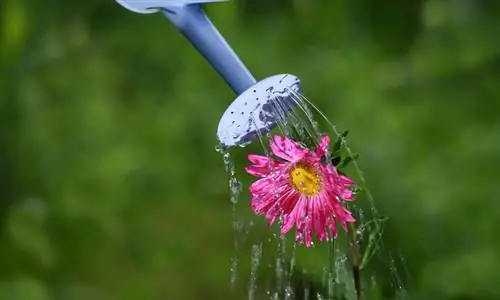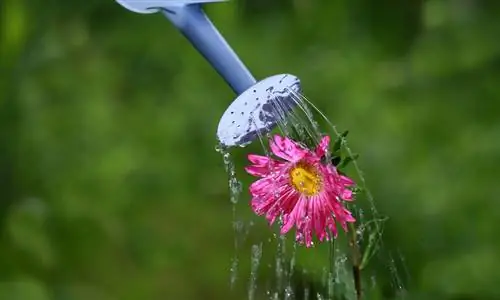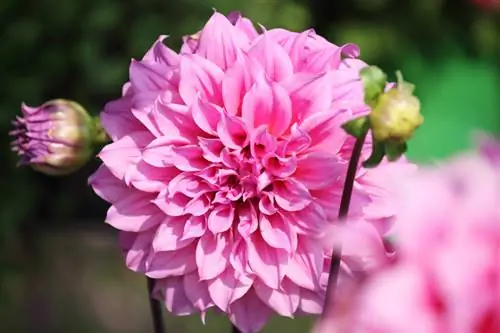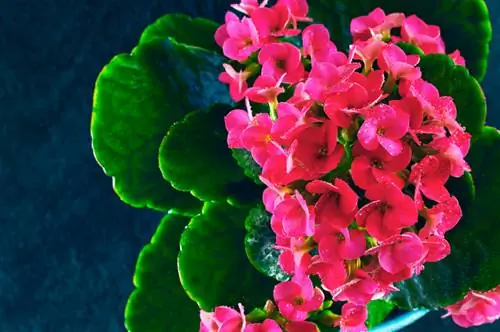- Author admin [email protected].
- Public 2023-12-16 16:46.
- Last modified 2025-01-23 11:20.
Asters tend to be frugal perennials. And yet they need a bit of care to get by and bloom profusely every year. What is really essential and what can you do without?

What does it take to care for asters?
Aster care includes regular watering in dry conditions, fertilization (potted plants every two weeks, outdoor plants in spring and autumn), winter protection, control for diseases and regular pruning (remove old flowers, cut back the plant by a third after flowering, autumn pruning just above the ground).
When should you water asters more?
Before flowering begins, you should water your asters more if there is no rain. Otherwise, flowers will be in short supply later on. Asters in pots should also be watered abundantly.
Can asters tolerate dry periods?
Asters don't like dry soil. Therefore, keep the substrate moderately moist and water the perennials when it is dry and persistently hot! Rainwater or lime-free water is best suited for watering.
Which fertilizers are suitable and how much should you fertilize?
Asters need a lot of nutrients for a long-lasting and exuberant bloom:
- Fertilize potted plants every two weeks from April to August
- Choose phosphorus-rich fertilizer for potted plants
- Provide outdoor plants with organic fertilizer
- fertilize in spring
- feel free to fertilize in autumn
Do asters need winter protection?
Most representatives of the asters are hardy in our latitudes. Only a few exceptions are more sensitive to frost. As a precaution, you should protect your asters over the winter. To do this, it is sufficient to cover the perennial with compost soil. This means you can kill two birds with one stone (fertilization and winter protection).
Which diseases are occurring more frequently?
There are two diseases that often affect asters if they are poorly cared for. On the one hand there is the aster wilt. You can recognize this disease by brown-colored and wilted leaves. Often just a change of location helps. Mildew can also occur. Spraying with a decoction of field horsetail helps against this.
How to cut asters correctly?
When cutting, please note the following:
- cut off old flowers regularly to encourage new flowers to form
- Flowers are suitable for vase cutting
- cut the entire plant back by a third after flowering
- It's best to prevent self-sowing (conserving energy)
- cut back to just above the ground in autumn
Tip
You should divide your asters every two to three years. This gives them a kind of energy boost and ultimately blooms profusely again.






